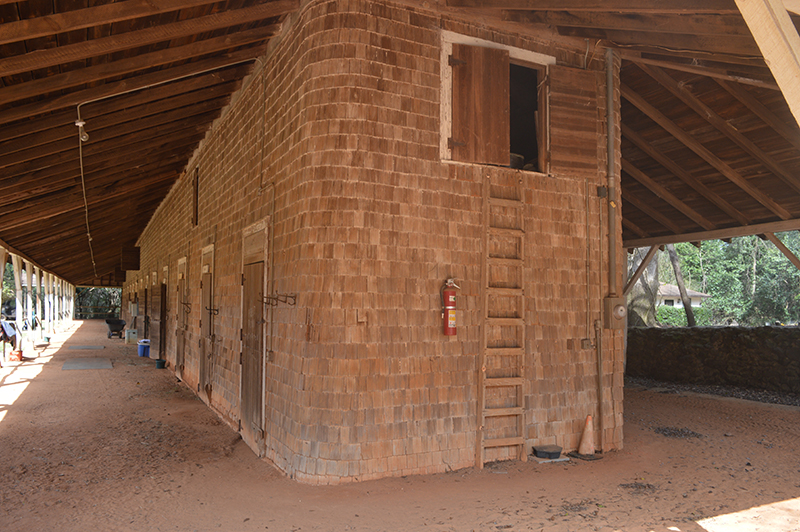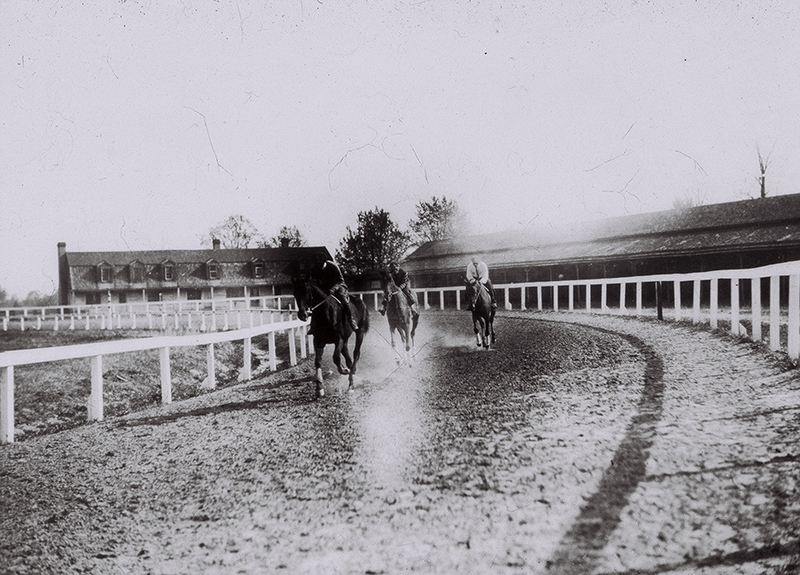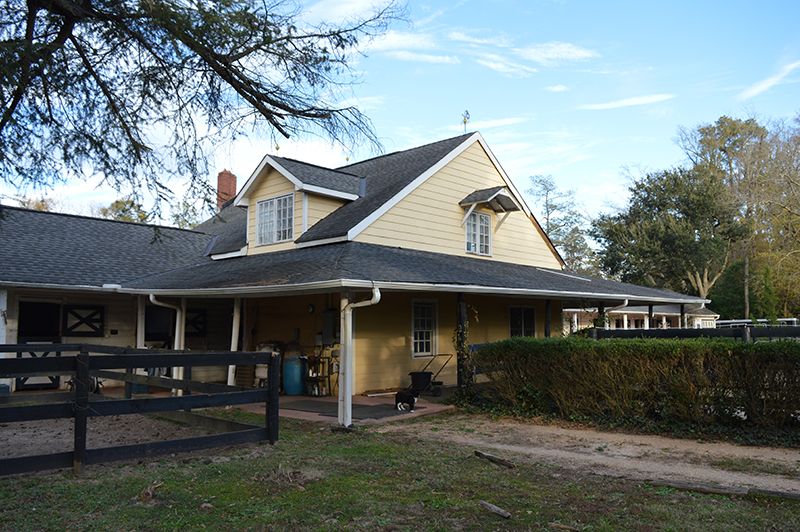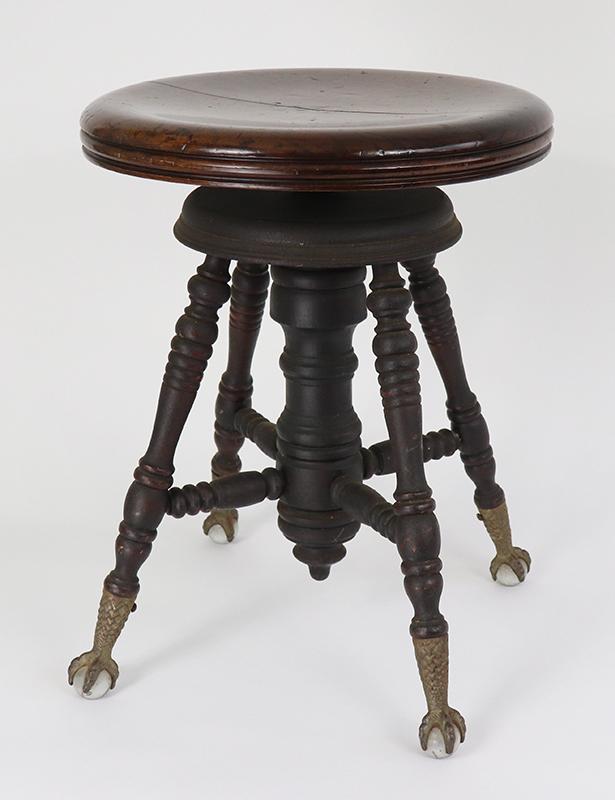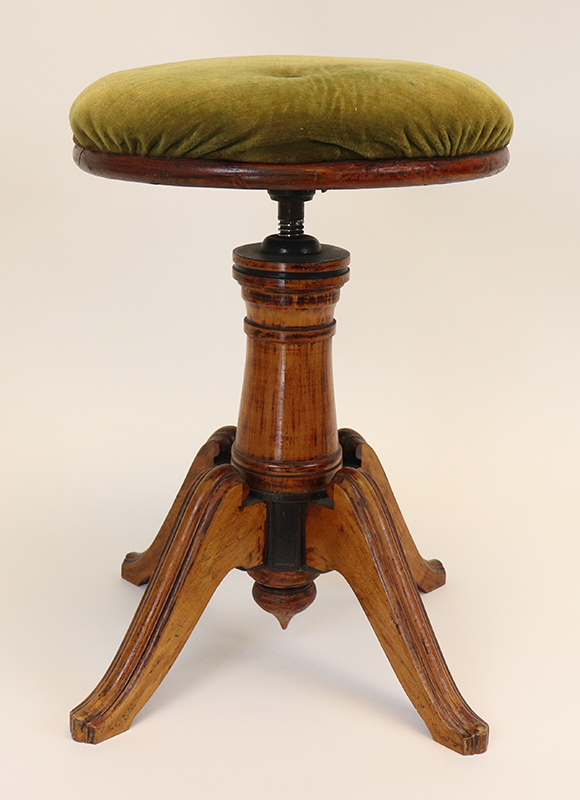Horse Stables and Musical Chairs: Scholars Share New Research During Virtual Colloquium
Although we were unable to gather in January for the usual New York City Emerging Scholars Colloquium and brunch in partnership with the Classical American Homes Preservation Trust (CAHPT), we were pleased to find a virtual format that included two joint presentations to share new research with interested attendees.
The first pairing featured Mary Fesak, PhD Candidate in American Civilization at the University of Delaware, and Jeffrey E. Klee, Vice President and Senior Director of Architecture at CAHPT, who discussed the history of 19th- and 20th-century stables with particular attention to CAHPT’s stable at Millford.
The second pairing spotlighted Allie Cade, Senior Curator and Director of Woodwind Studies at the Sigal Music Museum, and Grant Quertermous, Curator and Director of Collections at CAHPT, who shared a fascinating conversation on musical instruments and associated seating furniture.
A recording of the Colloquium can be found on our YouTube channel. Thank you to Mary and Allie for sharing some highlights of their research with Trust members in this article.
Elite Northern Horse Culture in South Carolina
In the 1890s, Gilded Age elites discovered South Carolina as an ideal location for winter sporting retreats. Wealthy Long Islanders found that the South Carolina midlands provided a superb climate for their equestrian pursuits. Thomas Hitchcock Sr. and William C. Whitney invested in the town of Aiken to attract their peers, transforming the area into a unique equestrian landscape through their development of Hitchcock Woods, training tracks, and polo fields. They jointly purchased over 8,000 acres, the core of which became Hitchcock Woods, cutting trails for riding, carriage driving, and foxhunting. Hitchcock developed a steeplechase course, locating his racehorse training complex nearby on his estate (figure 1). He also built a training track around a nearby polo field and constructed an additional training barn for thoroughbred flat racing horses. Whitney purchased the property from Hitchcock, renaming the polo field Whitney Field and constructing additional barns to enlarge the thoroughbred training center (figure 2).
Aiken became the winter capital of American polo during the early 20th century as Hitchcock and his Meadowbrook Polo Club teammates established nearly a dozen polo fields. Polo players constructed parallel rows of barns along Orangeburg Street. The barns were shedrow-style stables consisting of a row of stalls opening onto a covered walkway. The barns’ linearity and density gave the neighborhood a distinctively urban equestrian atmosphere. Meanwhile, the Whitney Track was becoming overcrowded with the number of Northeners seeking winter training for their racehorses. Fred Post and his son William constructed the state-of-the-art Aiken Training Track on their polo fields in 1941. The track became so popular that many prominent racing stables like Greentree Stable constructed private barns next to the track, adding to the mix of barns and houses in the equestrian-centric neighborhood. The thoroughbred training barns were shedrow barns like the polo stables but completely encircled by indoor dirt tracks to provide a sheltered space to walk racehorses before and after training. The Posts and track manager Ira Coward bought many of the older polo barns, converting them into thoroughbred training stables and leasing stalls to trainers. They also renovated several of the polo barns to have areas to walk horses (figure 3).
Although the predominance of horseracing has slowly declined, Aiken remains an important equestrian landscape. Today, many eventing and horse-showing stables call the old polo and thoroughbred training barns home.
Looking Beyond the Instrument: Reexamining the Material Culture of Music
Explorations of the music stool, as an object of pedagogy, agency, and clever craftsmanship, attempted to bring this specialized furniture form out of the shadow of the musical instrument and place it in central conversation within the American parlor. Undertaking this study led me to reexamine musical accessories within the Sigal Music Museum (SMM) collection, focusing on ancillary objects of European art music. Although cases, stands, and music stools are often seen as supplemental pieces, they played a critical role in the successful creation of sound—and are often as exuberant and distinctive as the instruments with which they converse. A closer look at these often-anonymous objects encourages new interpretive pathways.
The musical instrument seat, sometimes called a piano stool or a music stool, was a specialty form of furniture that appeared around the turn of the 19th century and continued to grow in demand, paralleling the domestic trajectory of the piano (figures 4 and 5). With a large threaded screw centering the seat so that the height may be adjusted, the diminutive music stool was integral to the performance of a keyboard instrument or pedal harp and facilitated privileged white women’s pursuit of proficiency on the instruments. Early-19th-century pedagogical manuals for the piano and pedal harp underline the vital importance of the adjustable music stool to achieving a best performance and avoiding injury (figure 6). Recontextualizing the music stool as an extension of an instrument, I was prompted to consider their function not only in the realm of craftsmanship, but in the design of a domestic soundscape.
Although some music stools bear labels of their makers, we must trace the origin of anonymous examples through materiality and design vocabulary. There is much more to uncover about the production, marketing, and consumption of the music stool throughout the 19th century, which will enhance our understanding of the interaction of instruments and accessories within the physical and intangible environment that created the world of music in domestic settings.
A print version of this article was published in The Magazine of the Decorative Arts Trust, one of our most popular member benefits. Join today!

